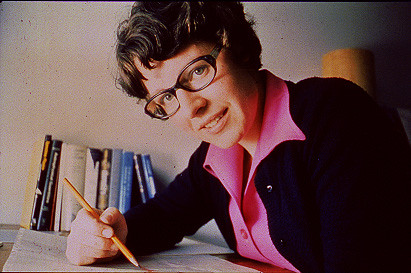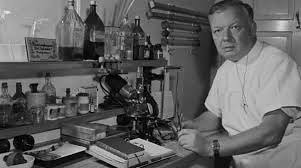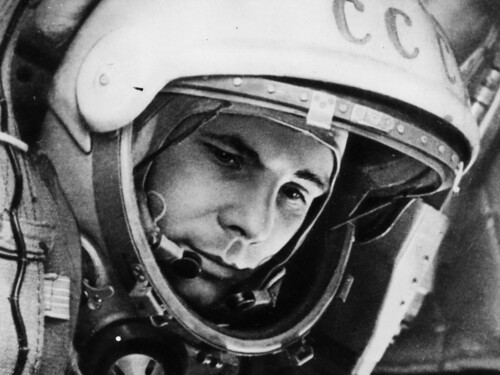Now is not the time to lose faith in R&D
 First published in Computing, March 2009
First published in Computing, March 2009Just a few years ago, Sun Microsystems sold a gadget that would make your business compliant with the Sarbanes-Oxley (SOX) Act of 2002. Small, flat, sleek, opaque and priced at a mere £45,000, it was SOX in a box.
Now that regulation is held out as a panacea for all manner of ills, will IT leaders rush to buy similar decriminalising equipment in 2009? I’ll be sad if they do. Orientating IT departments to slavishly follow edicts issued by governments and the chattering classes is a mistake.
In a downturn there is a need for more pioneering research and development (R& D), not less and you can’t convince me that government-driven agendas count as genuine innovation.
Consultancy group McKinsey’s third annual survey on IT strategy and spending, conducted among 548 executives from around the world, suggests that although business leaders are still surprisingly keen on investing in IT, they nevertheless plan to cut spending on IT innovation.
That’s a pity. After all, CIOs, as McKinsey found, want IT to create new opportunities and improve processes. Delightfully, too, non-IT executives would like less effort spent on reducing IT costs and less effort spent on ensuring compliance with regulations.
When they respond to surveys, of course, some executives may speak with forked tongues.
Looking at innovation among IT suppliers it is clear that retrenchment in R& D has been going on since well before the credit crunch. This savage reappraisal was laid out in stark terms in the Information Technology Outlook 2008, a 350-page report published just before Christmas by the Organisation of Economic Co-operation and Development (OECD).
Levels of R&D in 2006/2007 only equalled those in 2001. While the OECD says that research by IT suppliers has improved access to IT by making specialised skills less necessary, interfaces “have not markedly changed in the past decade”.
Interfaces pioneered by Nintendo’s Wii and Apple’s iPhone, then, appear to be anomalies, rather than spurs to radical improvements in simplicity, voice operation, or a media favourite operation direct from human brains.
It is not as if the giants of IT can’t afford to spend money on interfaces. As the OECD observes, Microsoft laid out over $7bn (£4.8bn) on R&D in 2007; Samsung, IBM, Nokia and Siemens more than $6bn, and Cisco, Intel and Motorola more than $4bn. But the anxiety today is that pursuing these kinds of expenditures in a recession could lead to massive losses, such as those now experienced by Sony.
Anyway, these figures need putting in perspective. In terms of risk-taking R& D versus fearful miserliness, IBM comes out well: by the end of 2008, recent calculations show, it had just $3bn in cash about half the value of its 2007 R&D budget. But look at the other guys: Apple had $27bn in cash; Microsoft, $19bn; Cisco, $20bn; Google, $16bn and Intel, $10bn.
To raise client productivity, suppliers need to put this kind of money to work. As the OECD observes, the representation of information 3D and holographic displays, tangible digital information, so-called augmented and immersive virtual realities deserves research. And breakthroughs in this area are not so far off. In 2006 in the US, India’s Infosys filed a patent to allow mobile phones to capture, send and display holographic images.
Here, as elsewhere, demands for regulation precede the reality of innovation already people are worried about visual pollution from mobile image projectors, and no doubt Greens will say that displaying holograms wastes energy.
Too bad. I’d rather have Princess Leia in my lap (not literally, you understand) than a box for SOX on my shelf.
Fmr President of Kenya on Trump cutting off foreign aid:
“Why are you crying? It’s not your government, he has no reason to give you anything. This is a wakeup call to say what are we going to do to help ourselves?”
America first is good for the world.
Our entire Green Socialist establishment should be banged up under the ‘Online Safety’ laws, for spreading demonstrable lies (the ‘climate crisis’), causing non-trivial harm to the industrial working class, ordinary drivers, farmers, taxpayers etc, etc.
#Chagos? #Mauritius PM Navin Ramgoolam "is reported to want Starmer to pay £800m a year, plus ‘billions of pounds in #reparations’." (14 January) https://www.spiked-online.com/2025/01/14/the-chagos-islands-deal-is-an-embarrassment/
Now the Torygraph wakes up https://telegraph.co.uk/gift/1ff8abbb462cd609
Read @spikedonline - first with the news!
Articles grouped by Tag
Bookmarks
Innovators I like

Robert Furchgott – discovered that nitric oxide transmits signals within the human body

Barry Marshall – showed that the bacterium Helicobacter pylori is the cause of most peptic ulcers, reversing decades of medical doctrine holding that ulcers were caused by stress, spicy foods, and too much acid

N Joseph Woodland – co-inventor of the barcode

Jocelyn Bell Burnell – she discovered the first radio pulsars

John Tyndall – the man who worked out why the sky was blue

Rosalind Franklin co-discovered the structure of DNA, with Crick and Watson

Rosalyn Sussman Yallow – development of radioimmunoassay (RIA), a method of quantifying minute amounts of biological substances in the body

Jonas Salk – discovery and development of the first successful polio vaccine

John Waterlow – discovered that lack of body potassium causes altitude sickness. First experiment: on himself

Werner Forssmann – the first man to insert a catheter into a human heart: his own

Bruce Bayer – scientist with Kodak whose invention of a colour filter array enabled digital imaging sensors to capture colour

Yuri Gagarin – first man in space. My piece of fandom: http://www.spiked-online.com/newsite/article/10421

Sir Godfrey Hounsfield – inventor, with Robert Ledley, of the CAT scanner

Martin Cooper – inventor of the mobile phone

George Devol – 'father of robotics’ who helped to revolutionise carmaking

Thomas Tuohy – Windscale manager who doused the flames of the 1957 fire

Eugene Polley – TV remote controls


0 comments